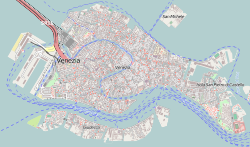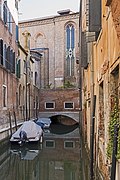| Church of San Stefano | |
|---|---|
 Church in Campo Santo Stefano | |
| Religion | |
| Affiliation | Roman Catholic |
| Province | Venice |
| Location | |
| Location | Venice, Italy |
| Geographic coordinates | 45°25′59.44″N12°19′48.68″E / 45.4331778°N 12.3301889°E |
| Architecture | |
| Type | Church |
| Style | Gothic |
| Completed | 15th century |
The Chiesa di Santo Stefano (Church of St. Stephen) is a large Roman Catholic church at the northern end of the Campo Santo Stefano in the sestiere of San Marco, Venice, Italy.











